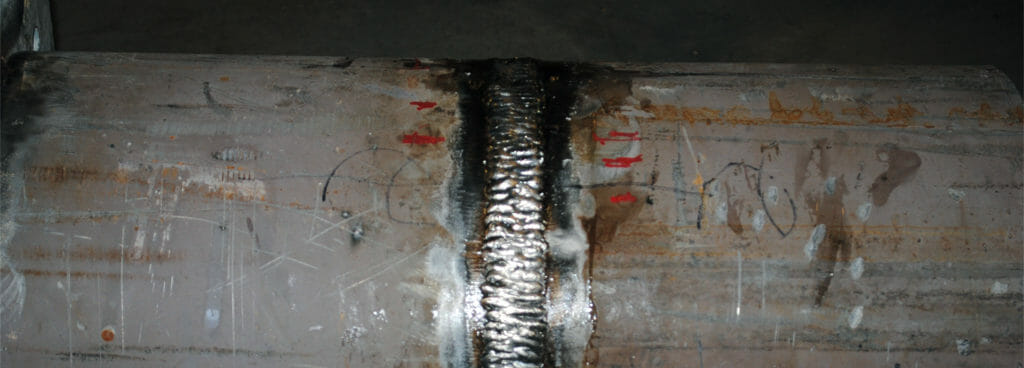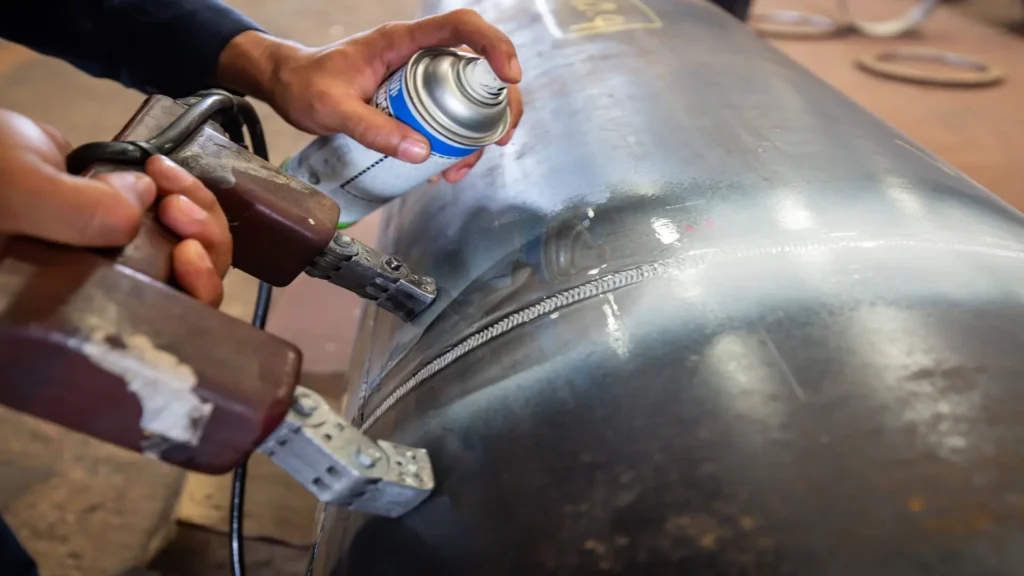Important Tips for Successful Welding Inspection Madison Providers
Exactly How Efficient Welding Evaluation Improves Architectural Integrity and Longevity
In the world of construction and engineering, the importance of welding examination can not be overemphasized, as it plays an essential function in making sure structural stability and prolonging the life-span of tasks. By releasing a series of innovative inspection strategies, such as ultrasonic and radiographic screening, specialists can pinpoint flaws that could jeopardize the dependability of a structure. However, the inquiry remains: just how do these meticulous procedures convert right into concrete advantages for longevity and safety and security? Join the exploration of just how effective welding inspections can transform prospective susceptabilities right into strengths, contributing to the enduring success of building and constructions.
Significance of Welding Examination
Guaranteeing the structural integrity and safety of bonded buildings requireds rigorous welding inspection processes. Welding assessment serves as a critical protect in the construction and production markets, where the toughness and sturdiness of joints dramatically affect the overall efficiency of structures.
In addition to safety, welding evaluation plays a crucial role in quality guarantee. Industry requirements and codes, such as those from the American Welding Culture (AWS) or the International Company for Standardization (ISO), require adherence to stringent standards, underscoring the relevance of inspections in fulfilling these professional and lawful obligations.
Secret Examination Techniques

Ultrasonic Examining (UT) makes use of high-frequency sound waves to discover subsurface problems, supplying specific details about weld honesty without creating any damages. Radiographic Examining (RT), entailing X-rays or gamma rays, offers an in-depth image of the weld's interior structure, exposing covert blemishes. Magnetic Particle Evaluating (MPT) is another non-destructive approach, specifically effective for spotting surface and near-surface gaps in ferromagnetic materials.
Penetrant Testing (PT) includes the application of a fluid dye to expose surface-breaking defects, providing a cost-effective and simple solution for non-porous materials. Each strategy has its details applications, staminas, and limitations, and typically a combination of methods is utilized to achieve comprehensive evaluation outcomes. Mastery of these techniques enhances the reliability and toughness of welded frameworks, aligning with safety and security and efficiency assumptions.
Identifying Common Flaws

Porosity, characterized by gas pockets within the weld, lowers the weld's strength and longevity. Fractures, which can happen throughout or after welding, posture significant threats due to their possible to circulate under tension.
Insufficient combination, where the weld steel stops working to bond completely with the base product, threatens the architectural honesty, leading to weak joints. Slag incorporations take place when non-metallic materials are caught in the weld, compromising its strength and high quality.
Identifying these defects via precise assessment techniques, such as visual assessment, ultrasonic screening, or radiography, is critical. Dealing with these concerns makes certain weld top quality, eventually supporting the architectural honesty and safety and security of the developed read more setting.

Enhancing Structural Efficiency
Comprehending the importance of recognizing typical weld defects normally leads to discovering methods for improving structural efficiency. The fundamental strategy for improving efficiency entails employing innovative welding strategies and products that mitigate flaw event. Using top notch filler products and ensuring appropriate heat control can significantly lower problems such as porosity and breaking, therefore enhancing the weld's integrity.
Integrating modern welding innovations, such as laser welding and rubbing mix welding, more amplifies structural resilience. These strategies provide premium accuracy and decreased thermal distortion, directly affecting the resilience and strength of the bonded frameworks. Moreover, embracing automated welding systems can make certain regular and repeatable weld high quality, decreasing human error.
Additionally, carrying out rigorous pre-weld and post-weld procedures is important. Proper joint style, surface area prep work, and stress-relieving procedures contribute to optimal weld performance. Carrying out complete pre-weld inspections permits early discovery of prospective issues, facilitating prompt corrections prior to they jeopardize the framework.
Long-lasting Benefits of Examination

Through vigilant examination techniques, the long-term benefits to structural integrity come to be significantly obvious. Constant and detailed welding assessments play a critical role in protecting against architectural failures by recognizing incongruities and flaws early in the building and construction procedure. This positive method ensures that potential concerns are addressed before they can compromise the safety and durability of frameworks. By catching flaws early, pricey repair services and downtime are lessened, ultimately extending the lifespan of the infrastructure.
In addition, regular inspections add to preserving conformity with sector criteria and laws, thereby avoiding economic and legal repercussions. This adherence to top quality assurance not just improves the reliability of the structure yet likewise fosters count on among stakeholders, including clients, engineers, and regulatory bodies. The comprehensive documentation of examination outcomes works as a valuable resource for future upkeep and repair service efforts, promoting educated decision-making.
On top of that, effective evaluation methods sustain innovation by incorporating innovative technologies such as non-destructive screening and digital imaging, which can boost accuracy and efficiency. This technological combination even more underscores the commitment to quality in architectural stability. Ultimately, buying precise welding inspections is a sensible strategy that produces significant lasting advantages, securing both the physical and monetary financial investment in facilities projects.
Conclusion
Effective welding assessment visit homepage plays an essential role in enhancing structural stability and longevity by recognizing defects early in the building procedure. Making use of techniques such as aesthetic examination, ultrasonic screening, and radiographic screening guarantees the detection of problems like splits and porosity that endanger weld strength. Extensive examinations ensure compliance with sector criteria, thereby lengthening the lifespan of frameworks, minimizing pricey repair work, and fostering stakeholder count on the integrity and safety of welded building and constructions.
In the realm of construction and design, the relevance of welding evaluation can not be overemphasized, as it plays a pivotal function in making sure architectural honesty and extending the life expectancy of projects.Making sure the structural honesty and safety and look at these guys security of welded buildings requireds extensive welding inspection processes.Building upon the significance of welding assessment in safeguarding architectural integrity, recognizing the key evaluation techniques becomes critical for effective execution. Effective welding evaluation encompasses a variety of techniques developed to assess weld quality, ensuring compliance with stringent design requirements - Welding Inspection Madison.Efficient welding inspection plays an important function in boosting architectural integrity and longevity by recognizing flaws early in the construction procedure